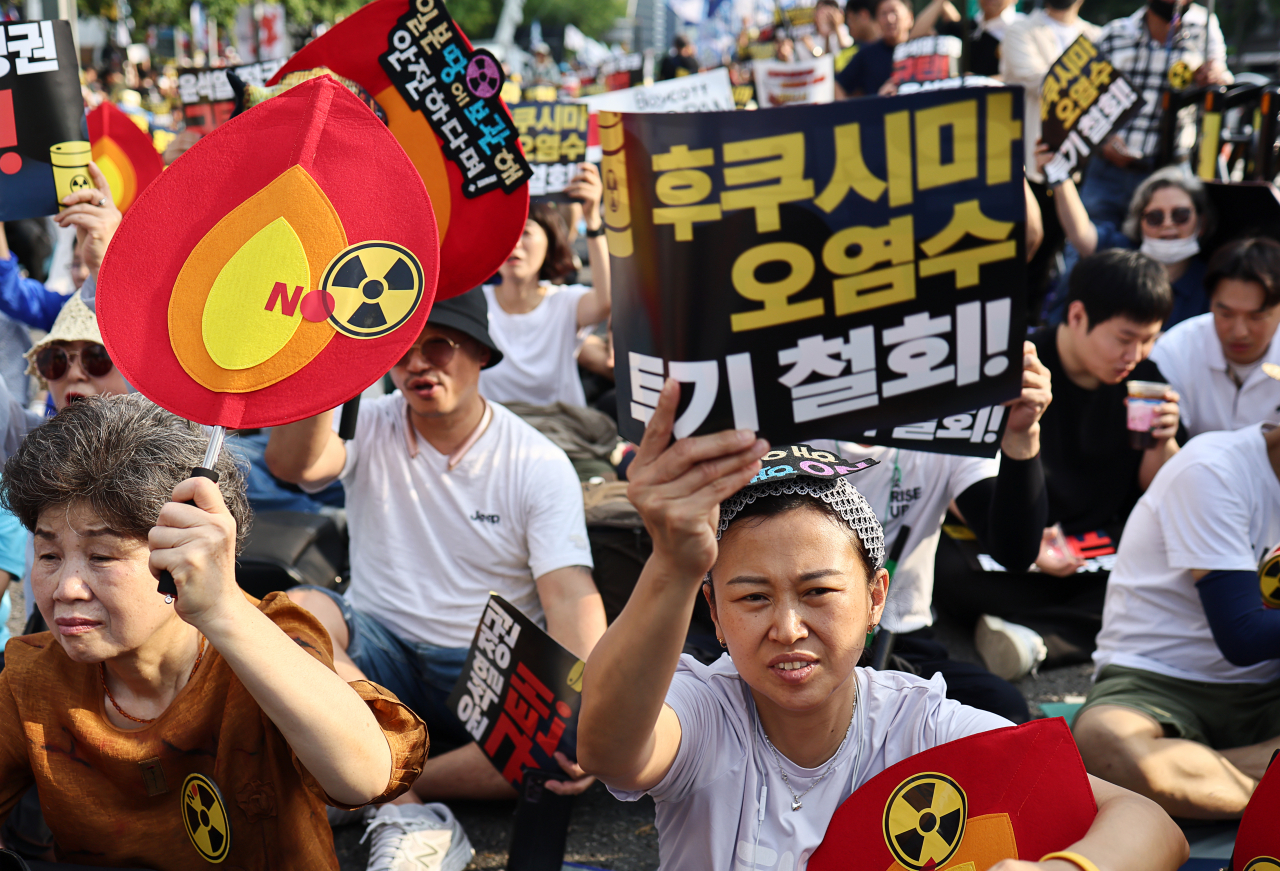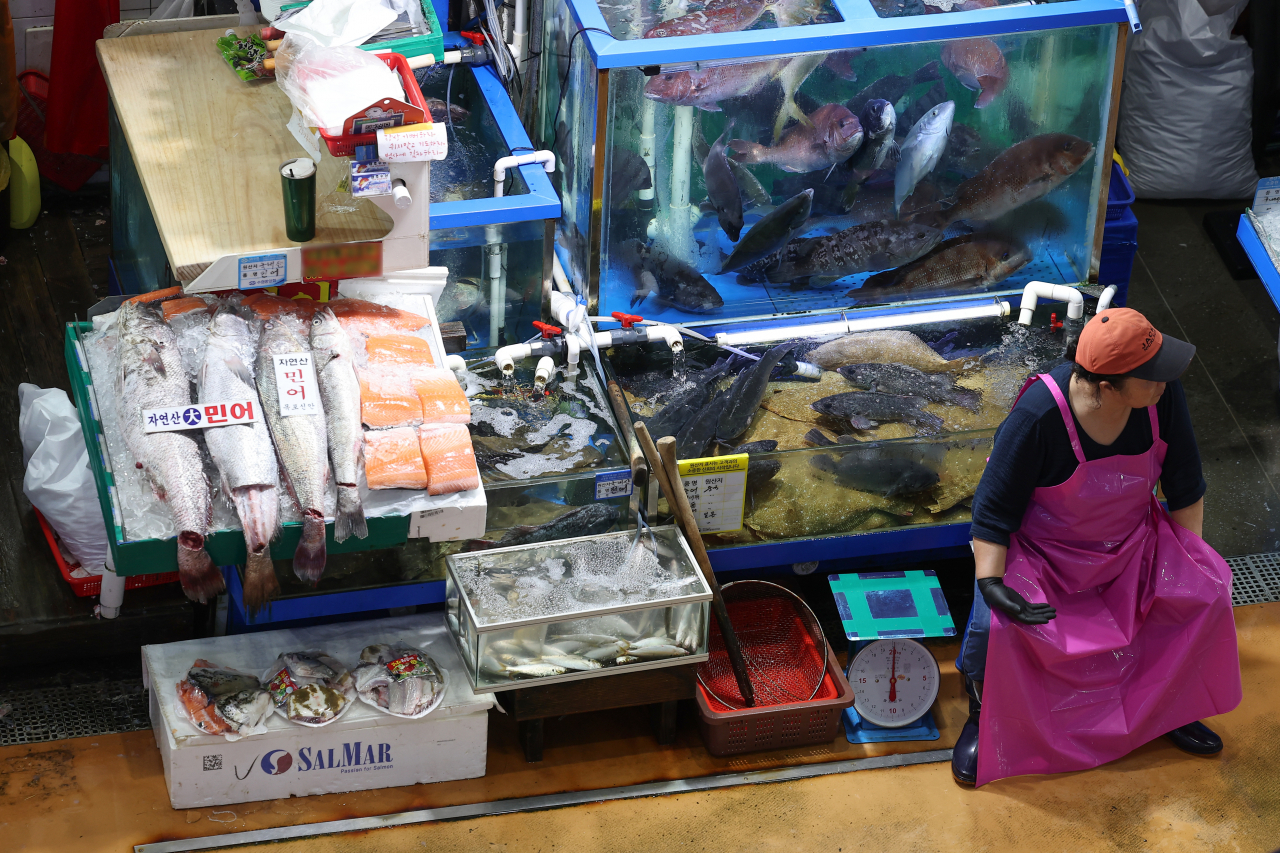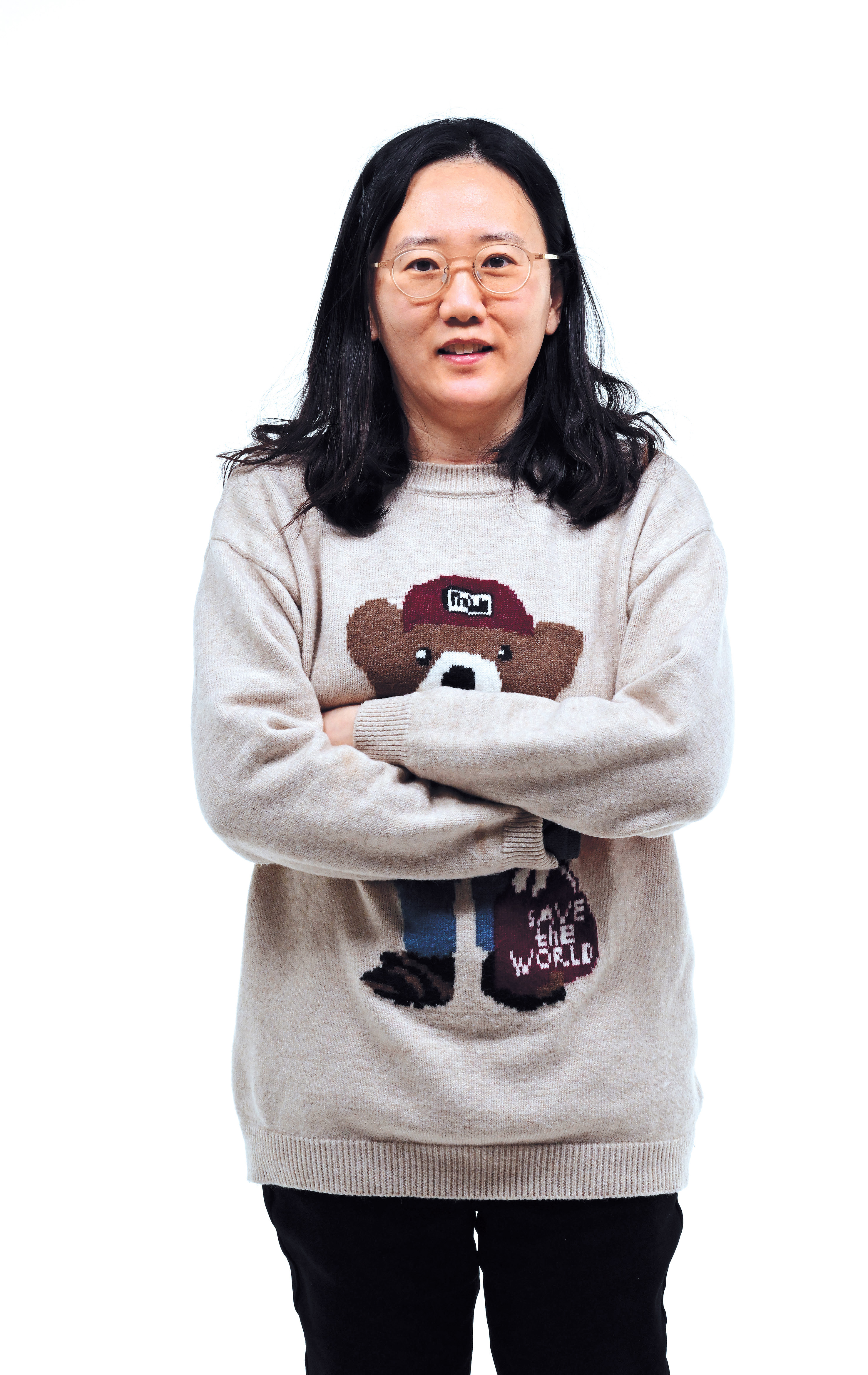Russia's nuclear waste dump in 1993 had no significant impact on East Sea: presidential office
By Kim So-hyunPublished : Sept. 1, 2023 - 15:37

After Russia dumped radioactive waste in the East Sea in 1993, South Korea continued to measure radioactivity at about 50 different points in its waters, but "no significant changes have been reported as of yet," a senior aide to President Yoon Suk Yeol said earlier this week.
Lee Kwan-sup, senior presidential secretary for policy planning, made the statement on Wednesday at the National Assembly, saying that filing a complaint with an international organization against the Japanese government for releasing contaminated water would only make the plaintiff an object of ridicule.
“China releases (radioactive materials of) over 200 trillion becquerels into the West Sea each year, and we release tritium of more than 190 trillion becquerels, but there is no safety issue,” Lee said.
Tritium, or hydrogen-3, is a rare and radioactive isotope.
In 1993, a Russian navy vessel dumped 900 tons of low-level nuclear waste into the East Sea about 540 kilometers west of Hokkaido, according to Korean-language daily Chosun Ilbo. The waste consisted of old nuclear reactors, cooling water and liquid residue from deactivated nuclear submarines.
The wastewater that the Japanese government plans to release from its Fukushima Daiichi nuclear power plant has been filtered by a system named ALPS to remove cesium and other radioactive materials.
The nuclear waste that Russia dumped in 1993 had not been filtered.
It has also been found that the government of the former Soviet Union had dumped huge amounts of nuclear waste into the East Sea, including near Ulleungdo, for nearly 30 years since 1966.
Hence, South Korea, Japan, Russia and the International Atomic Energy Agency closely looked into the level of radioactive contamination in the East Sea, also called the Sea of Japan, between 1994 and 1995, and concluded that there was no meaningful difference in the concentration of radioactive contamination compared to that of other seas. They also said, as the nuclear waste has been diluted in seawater, there was no radioactive contamination significant enough to be harmful to humans.
The radioactivity level of the tritium from the nuclear waste that Russia dumped over 30 years amounts to about 586 trillion becquerels. The radioactivity level of the contaminated water set to be released from Fukushima is about 860 trillion becquerels.
As for other countries, the figures may be varying depending on who measures it, but it is a fact that China and others release sizeable amounts of tritium every year.
According to the Nuclear Safety And Security Commission, South Korea dumped some 214 trillion becquerels of waste into the ocean from nuclear power plants last year. China dumped over 1 quadrillion becquerels in 2020, and the US more than 1.7 quadrillion becquerels.
The release of tritium by China and South Korea are different from that of the tsunami-hit Fukushima water as the former is from the cooling water of functioning nuclear power plants, whereas the latter came in direct contact with melted down nuclear fuel after the Fukushima Daiichi plant was destroyed by the 2011 earthquake and tsunami.
After the 9.0-magnitude earthquake and tsunami that struck the Tohoku region in eastern Japan in March 2011, some 100 trillion becquerels of groundwater contaminated by some 200 types of radionuclides such as cesium, unfiltered, poured out into the ocean everyday for a month.
Experts estimate that the radioactive materials that were released then amount to more than 1,000 times of the amount in the water currently stored at the Fukushima plant.
The Ministry of Oceans and Fisheries and the Nuclear Safety and Security Commission regularly checks the level of contamination with radioactive materials such as cesium and tritium at 52 points in near waters and 40 points in far seas.
In the thousands of South Korean government tests run on radioactivity in fisheries conducted since the Fukushima accident in 2011, all were found to be suitable for consumption.
In April 2021, then-President Moon Jae-in instructed South Korean officials to look for ways to file a suit against Japan with International Tribunal for the Law of the Sea after the country decided to release the contaminated wastewater into the ocean.
But they never filed a suit.
The United Nations Convention on the Law of the Sea and the IAEA do not prohibit the release of contaminated water into the ocean by a sovereign state as long as it meets international standards in taking necessary actions to prevent contamination.






![[KH Explains] No more 'Michael' at Kakao Games](http://res.heraldm.com/phpwas/restmb_idxmake.php?idx=644&simg=/content/image/2024/04/28/20240428050183_0.jpg&u=20240428180321)


![[Grace Kao] Hybe vs. Ador: Inspiration, imitation and plagiarism](http://res.heraldm.com/phpwas/restmb_idxmake.php?idx=644&simg=/content/image/2024/04/28/20240428050220_0.jpg&u=)










![[Herald Interview] Xdinary Heroes shoot for the next level with 'Troubleshooting'](http://res.heraldm.com/phpwas/restmb_idxmake.php?idx=642&simg=/content/image/2024/04/29/20240429050745_0.jpg&u=)